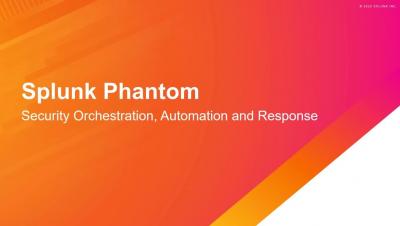Security | Threat Detection | Cyberattacks | DevSecOps | Compliance
%term
Your 30-60-90 Day AppSec Plan
Your stakeholders have signed off on an application security program, you’ve selected a vendor … but now what? There is no detailed handbook or instruction manual for getting started because every organization is different. You need to formulate your own plan to make sure the program meets the individual needs of your organization.
What Does it Take to be a Rockstar Developer?
If there’s one thing you need to value as you move through your career as a modern software developer, it’s the importance of security. With application layers increasing and the shift left movement bringing security into the picture earlier on the development process, security should be top of mind for every developer working to write and compile successful code.
6 Cloud Security Threats Healthcare Companies May Face - With Solutions
For healthcare organizations that handle a lot of patient data, including very sensitive information, cloud computing is a revolution to data storage. Cloud computing in healthcare lowers data storage costs (compared to the old paper-storage era), enables easy retrieval of patient data and also improves the privacy of patient information. This has inevitably led to a rise in the adoption of cloud computing in healthcare.
Practical security engineering: Stateful detection
Detection engineering at Elastic is both a set of reliable principles — or methodologies — and a collection of effective tools. In this series, we’ll share some of the foundational concepts that we’ve discovered over time to deliver resilient detection logic. In this blog post, we will share a concept we call stateful detection and explain why it's important for detection.
Improve network security with traffic filters on Elastic Cloud
Today we are pleased to announce new traffic management features for Elastic Cloud. Now you can configure IP filtering within your Elastic Cloud deployment on Amazon Web Services (AWS), Google Cloud, and Microsoft Azure. We are also announcing integration with AWS PrivateLink. These features help give you greater control over the network security layer of your Elastic workloads.
How to Modernize Your Security Operations Center (SOC)
In an evolving world, the modernization of the security operations center (SOC) is pivotal to the success of digital transformation initiatives. Security teams, however, are facing a shortage of cybersecurity professionals and struggling to detect and prioritize high-priority threats. Analysts in data-driven organizations can combat these issues by bringing people, process and technology together.
Challenges Facing Sensitive Sectors in Working Securely from Home
Making the transition to a work from home arrangement has been a heavy lift for a lot of organizations. However, due to various risk factors and regulations, making the sudden shift to working from home has been more complicated for some sectors than others. Industries such as the financial and healthcare sectors, as well as those working for the government, face tighter restrictions on how they are allowed to work remotely.
6 Benefits of Internal Auditing
If you want confidence that your organization is meeting its core business goals, you need internal audits. If you want to save your organization time and money and keep everything running like a well-oiled machine, internal audits will help you get there. If you want to protect your enterprise against fraud and prevent fraudulent practices, internal audits are key.
Teaching kids skills to catch hackers and fix security risks at Cyber Discover
We are now living in an era where kids are growing up with the internet every day. Those of us who are older learned how to be more skeptical of technology, but our children largely aren’t growing up with this same level of skepticism. Today, over 60% of children are using the internet for over forty hours a week. Many of these children are taking cybersecurity for granted because they simply aren’t aware of many of the digital security risks that come with online use.










